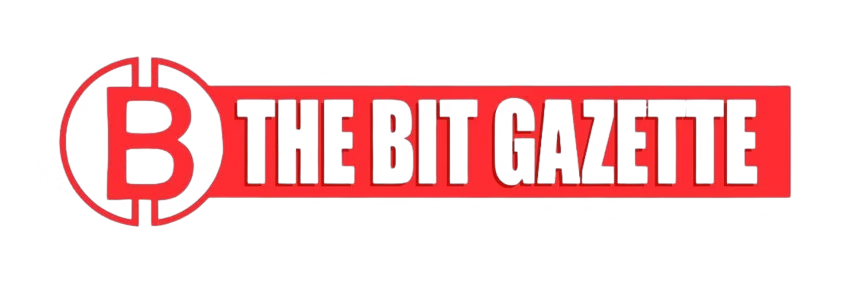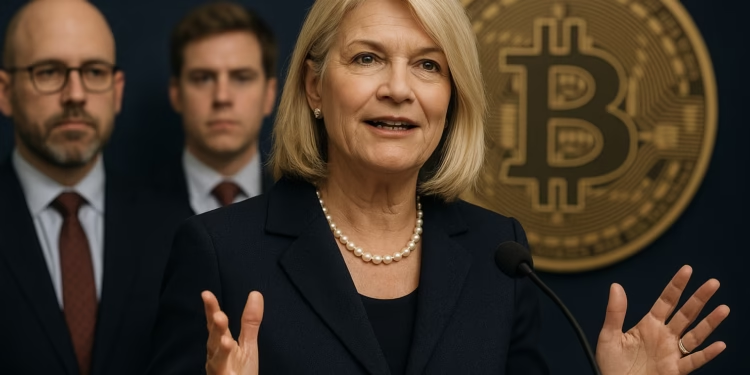Senator Cynthia Lummis’s Bitcoin plan is once again dominating Washington headlines, as the pro-crypto lawmaker pushes a bold, budget-neutral strategy to revalue U.S. gold reserves and channel the gains into a Strategic Bitcoin Reserve.
The proposal, unveiled this August, positions Bitcoin alongside gold as a pillar of U.S. financial security, sparking debate over whether America should anchor its future economic dominance on digital assets.
Senator Lummis bitcoin plan centers on the newly promoted BITCOIN Act, which would revalue U.S. gold reserves at current market prices, using the paper gains to fund expansion of the Strategic Bitcoin Reserve (SBR) without raising taxes or national debt.
This Senator Lummis bitcoin plan offers a creative workaround to a legal bottleneck: only about 15 % of seized Bitcoin is legally available for government use, slowing reserve growth.
By contrast, revaluation of gold reserves could unlock hundreds of billions in surplus value to transfer into Bitcoin holdings.
Gold revaluation: The core of Senator Lummis bitcoin plan
At a press briefing, Senator Cynthia Lummis stated:
“We cannot save our country from $37 trillion in debt by purchasing more Bitcoin. We can revalue gold reserves to today’s prices and transfer the increase in value to build SBR.”
Treasury Secretary Scott Bessent, aligned with this vision, confirmed the government will not purchase new Bitcoinoutright, opting instead to rely on forfeited assets and explore budget-neutral paths.
The Senator Lummis bitcoin plan gives structure to this fiscal creativity by legally channeling gold reserve gains into digital reserve expansion.
The BITCOIN Act, introduced in March 2025 by Senator Lummis and Rep. Nick Begich, lays out a legislative framework for national-level crypto strategy.
Key provisions include:
-
Acquisition of up to 1 million BTC over five years (up to 200,000 BTC per year).
-
A minimum 20-year holding period to ensure long-term strategic stability.
-
Mandatory quarterly public “proof-of-reserves” disclosures.
This structure supports the Senator Lummis bitcoin plan by offering transparency, custody safeguards, and durability in U.S. digital asset reserves.
National context: How Senator Lummis bitcoin plan fits federal strategy
President Trump’s March 6, 2025 executive order formally established a Strategic Bitcoin Reserve, funded by forfeited Bitcoin holdings—estimated at about 200,000 BTC.
Agencies must now report, account, and possibly transfer their holdings to this reserve.
Journalists and analysts see Lummis’ legislative effort as a bipartisan push to turn executive vision into lasting law. It elevates Bitcoin to a national asset on par with gold, aiming to strengthen the U.S. financial position globally.
Despite its innovation, the Senator Lummis bitcoin plan faces skepticism from economic circles. Critics raise concerns about Bitcoin’s volatility, cyber-risks, and symbolic financial effectiveness.
A 2025 University of Chicago survey found zero economists supported creating a strategic crypto reserve through borrowing.
Still, proponents argue that using seized assets or gold revaluation offers a taxpayer-friendly model. As S&P Global noted, official recognition of Bitcoin as a reserve asset—even symbolically—marks a seismic shift.
State-level echoes of Senator Lummis bitcoin plan
Echoing the federal push, the Texas House recently passed SB 21 to create a state-level strategic Bitcoin reserve, storing Bitcoin in cold wallets for at least five years.
Supporters say this move enhances economic resilience and positions Texas at the forefront of digital finance.
Texas’ action underscores the broad appeal—and complexity—of the Senator Lummis bitcoin plan, as both states and the federal government maneuver to harness crypto’s potential.
Senator Lummis bitcoin plan stands out as a bold, budget-neutral proposal to rework financial reserves for the digital age.
Its combination of gold revaluation, legislative clarity, and long-term strategy could make the U.S. a trailblazer in national crypto policy.
Whether the BITCOIN Act gains traction or inspires further crypto-regulation remains to be seen—but one thing is clear: Senator Lummis is leading the charge for a digital-asset future.











